first-hand experience with zephyr dcbl and act technology?
LE
10 years ago
Featured Answer
Sort by:Oldest
Comments (60)
gigelus2k13
10 years agoLE
10 years agoRelated Discussions
AquaLift Technology on Maytag Ranges/Oven Cleaning
Comments (146)I have a Whirlpool Aqualift gas range. I've had several brand name ranges in my lifetime and ALL EXCEPT THIS ONE cleaned like a charm with their "self-clean" or "continuous clean" feature. This Whirlpool range came with this brand new house when we bought it in 2016. As anyone who knows me could tell you, I've always kept my ranges clean. And with just my husband and myself living in our homes, I would generally only run the self-clean or continuous clean twice a year AT MOST! With THIS range, when it came time to do my first cleaning, I was excited to think of using this "new and innovative" new feature called Aqualift! WHAT A BUMMER! It ONLY cleans the bottom cavity where you pour the water. It's doesn't clean the edges of that cavity or the sides of the oven or the oven ceiling!!!! And now, five years later, I have a very dirty oven because foods just get burnt on even more although I use the Aqualift once or twice a year - AS I'VE ALWAYS DONE!! And it is such an insult to be told that we just need to clean it more often!! It's 2021!!!! We don't pay good money for ovens that must be cleaned THOROUGHLY after EACH use!!!!!!!!!!! At the VERY LEAST, Whirlpool should have given customers a great big warning in red saying YOU MUST CLEAN YOUR ENTIRE OVEN THOROUGHLY EVERY TIME YOU USE IT OR IT WILL NEVER BE CLEAN!!! But we all know why they didn't do that - BECAUSE NO ONE WOULD BUY THE RANGE - THAT'S WHY!!!! ............Is there anything we can do? They owe us BIG TIME! ................We're considering another move and I literally fear that some gal will love this house and think it's so clean and nice - then she'll open the oven door!!!!!! AQUALIFT COULD LITERALLY AFFECT THE SELLING OF HOMES!!! If anyone is acting on this situation legally, please comment & let us know what we can do!!!!!!!!!!!!!!!!!!!!!!...See MoreZephyr or Windster Range Hoods
Comments (9)I have a Windster under-cabinet model with baffles. It's only been installed for about a year, but so far I like it fine. Speed 3 is somewhat noisy, Speed 2 is quite tolerable, and Speed 1 is fine. The baffles are easy to remove and replace for cleaning ( they have handles that are easy to grasp rather than those little button-type knobs) and they capture a LOT of grease. I do have to clean them more often than I'd like because I don't like looking up there and seeing that grease. Their customer service department has been responsive. When I had a problem with the baffles, new ones were hand delivered to me immediately. I like the look of the hood and it seems quite sturdy. The LED lighting is adequate and I specifically wanted a hood that didn't use Halogens. My one complaint is that the instructions did not say that we needed to install a damper (silly me, I just assumed it either came with one or would instruct me to install one) and we didn't discover that until AFTER it was installed, which required doing some things over again. Windster hoods do hail from China, so I'll have to see how it works out for the long term, but so far, so good....See MoreLost pages again??? Come on GW....get your act together!!
Comments (19)I've been a member of a big switch of a group that was much more tightly tied together than this one. About half the group didn't make the switch. Only a few stayed on both. Both groups thrived, but the cultures changed vastly. One thing that I think is good about this system is that we don't actually have an archive of really good threads. People generate new conversations when they come in and ask the same old question. That way they're brought into the fold, and made welcome. And new opinions are added. Example: cast iron vs. stainless steel sink. I've personally answered this at least a dozen times, each a little differently, targetted to the specific way the question was asked. If we just had sticky topics, or different topics with subthreads for sinks, we wouldn't have that kind of immediate welcome to the big ol' group. Instead, if a thread is good enough, someone will have it saved or something and provide a link, but people will still answer the question. I think it's also good that our social questions are mixed in with the Rixi tile questions and floorplan reviews. More modern software wouldn't do that. BUT...I wonder if the page losses happen when people make coding errors using HTML in their messages. I did that once where it affected how the preview page posted. I wonder if it's possible for something to get through and screw up the works?...See MoreWhat is technology doing to our relationships?
Comments (22)mimi-- it could be. I know she isn't being mean, just wonder what is up. She always does that with the dates and times and goes on and on how she wants to see us more often-- even says she wants to get on a schedule to see us weekly. graywings, I will check out that link! Yes, could very well be we are no longer important to her. To an extent she was always like this, but I let it go-- I think she likes to be happy around people and does not know that people are OK with you even when you are not . . .She and her husband are godparents to one of my children, so we are not random friends. She has struggled w/adoption and was one of the people who distanced herself from me when I got pregnant with my 4th (and really, I never talk about being PG because I think it is a boring subject!). However, she adopted a child in the late winter and said she was set . . .I thought that might make her feel settled, since she was on such a roller coaster for years. Then I got PG again. I did not call her and tell her (again, why? I only told people I saw in person if it came up), but DH posted it on FB and she was upset I had not told her. (I had not seen her.) Don't know if it is the PG thing again. But anyway, aside from this friend issue (which I'm just going to let go), I appreciate the thoughts in this discussion. I have seen people using tech. while out, but mostly teens and parents at the park w/their kids. I would never guess it would extend so much to college campuses and even a long cycle ride. That is eye-opening. I thought once people were together for a "fun" reason that tech. would come in 2nd. Maybe people are not used to being around other people, so they don't know what to do with each other anymore? marcolo, you are so right about the consequences (or lack thereof). I would never, ever, EVER let my child (or teen) bring some sort of device that she could use to ignore us while we are out or at dinner. We got my oldest (only 9) an iPod for her birthday. I have very mixed feelings about it. I did not want to get it, but somehow gave in to DH (DD did not ask for one). She does neat things with it, like videos and photos . . .thinks she might want to make movies in the future, but she also plays games on it. (I was horrified that DH put games on there-- it's like setting a child up to be addicted.) BUT, on the other hand, all she used to do at night, for hours, was read. Now she listens to music, does the photos/movies, and plays games. Reads, too, but not as much. This all crept up sort of slowly, so now I am going to set a time limit with it daily, and she can't use it in bed. (The only good thing is that she and DH play some mean Scrabble games together . .she already beat me and has been close to beating DH several times.) daisy, I looked up that book. I think much of it is true now! My sister just signed her kids up for a virtual (computer!) school. amj, very true about Meetup! I think the RSVP feature is great! Thank you for this discussion. I know I can't change the rest of the world, but as pesky said, the best thing to do is make a change myself. I am making more of an effort to go out and get us all around real people. I love the hand-written note thing . . .I keep thinking we could do this once a week (send notes and cards out to people) but I will definitely do this....See Morefoodonastump
10 years agoLE
10 years agofoodonastump
10 years agokaseki
10 years agofoodonastump
10 years agoLE
10 years agoLE
10 years agofoodonastump
10 years agogigelus2k13
10 years agoLE
10 years agogigelus2k13
10 years agoCT_Newbie
10 years agoLE
10 years agogigelus2k13
10 years agofoodonastump
10 years agoBrett
8 years agoWhats InAName
8 years agoBrett
8 years agoWhats InAName
8 years agokaseki
8 years agobarnaclebob
8 years agoWhats InAName
8 years agobarnaclebob
8 years agoWhats InAName
8 years agolast modified: 8 years agobarnaclebob
8 years agolast modified: 8 years agoabschrock
8 years agoWhats InAName
8 years agoMike Maruska
7 years agoBrett
7 years agoMike Maruska
7 years agoAnon Username
7 years agoBrett
7 years agoAnon Username
7 years agoWhats InAName
7 years agoAnon Username
7 years agoEric
6 years agobarnaclebob
6 years agoBernard Posner
5 years agolast modified: 5 years agotessyts
5 years agoDave M.
5 years agohandylady88
5 years agoDave M.
5 years agohandylady88
5 years agoFB Wu
3 years agoCandy Liu
3 years agoJohn Kao
2 years agoK H
2 years ago
Related Stories

STAIRWAYSClear Staircases — They're a Real Glass Act
If you're flush with funds, you can have a ball with crystal on your stairs. The rest of us can just marvel from afar
Full Story
HOUSEKEEPINGDishwasher vs. Hand-Washing Debate Finally Solved — Sort Of
Readers in 8 countries weigh in on whether an appliance saves time, water and sanity or if washing by hand is the only saving grace
Full Story
HOME INNOVATIONSConsidering Renting to Vacationers? Read This First
More people are redesigning their homes for the short-term-rental boom. Here are 3 examples — and what to consider before joining in
Full Story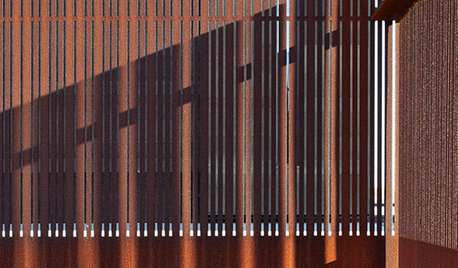
ARCHITECTUREDesign Workshop: 10 Reasons to Put Craft Into Modern Architecture
Technology has led us to expect perfection, but handcrafted details can provide something even better
Full Story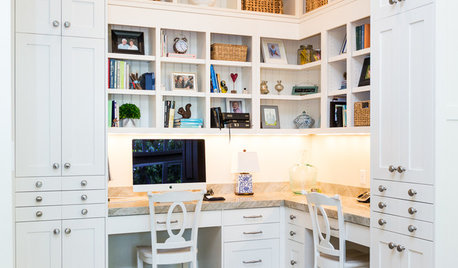
HOME OFFICESThe 20 Most Popular Home Office Photos of 2015
Technology paves the way for space-saving work areas, while designers make up for small sizes with style
Full Story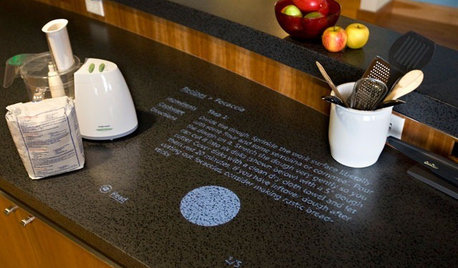
HOME TECHComing Soon: Turn Your Kitchen Counter Into a Touch Screen
Discover how touch projection technology might turn your tables and countertops into iPad-like devices — and sooner than you think
Full Story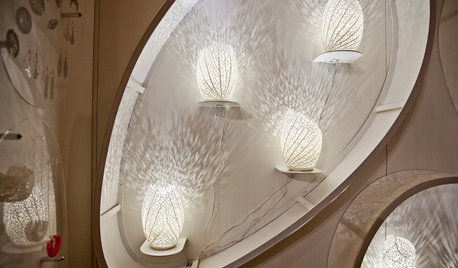
TASTEMAKERS3D Printing Takes Furnishings to New Heights at ICFF 2013
See how three-dimensional printing, laser cutting and other innovative technologies are changing the face of furnishings
Full Story
KITCHEN APPLIANCESFind the Right Cooktop for Your Kitchen
For a kitchen setup with sizzle, deciding between gas and electric is only the first hurdle. This guide can help
Full Story
HOUZZ TOURSMy Houzz: Accessibility With Personality in an 1870 Home
Hand-painted murals and personal touches fill an accessible home with warmth and charm
Full Story
FLOORSIs Radiant Heating or Cooling Right for You?
Questions to ask before you go for one of these temperature systems in your floors or walls (yes, walls)
Full Story



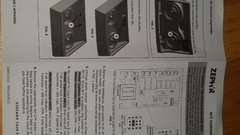
Nk Gerber